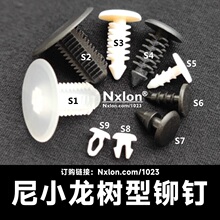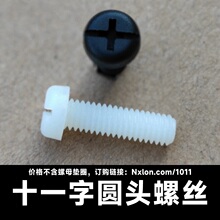Stud Bolt
©Nxlon.com D/T:

The stud bolt is a kind of fastener widely used in mechanical connections. The following is a detailed introduction to the stud bolt:
Structural Characteristics of the Stud Bolt
Threads at Both Ends: The main feature of the stud bolt is that it has threads at both ends. The threads at these two ends can be the same or different. Commonly, the threads are of equal length, that is, the lengths of the threads at both ends are equal. However, in some special applications, there are also designs with unequal thread lengths. There are various choices for the thread specifications according to different usage requirements, such as metric threads like M6, M8, M10, etc., as well as imperial threads.
Middle Plain Shank or Threaded Shank: The middle part connects the threads at both ends. Usually, it is a plain shank, and in some cases, it is a threaded shank. The function of the plain shank part is to provide certain guidance and positioning during installation. At the same time, it can also reduce the friction with the connected parts, making it easier to install and remove the bolt. If it is a threaded shank, it can increase the overall strength and load-bearing capacity of the bolt, which is suitable for some occasions with high requirements for connection strength.
Specification Dimensions of the Stud Bolt
Diameter: The diameter range of the stud bolt is relatively wide. Commonly, it ranges from M6 to M48 or even larger. Stud bolts with smaller diameters are often used for the connection of some light equipment or instruments, such as the fixing of circuit boards in electronic devices. While those with larger diameters are used for the connection of mechanical structures that bear greater loads, such as the assembly of the fuselage of large mechanical equipment and the connection of bridge structures.
Length: The length specifications are diverse, generally ranging from dozens of millimeters to hundreds of millimeters, for example, 50mm, 80mm, 100mm, 150mm, 200mm, etc. The selection of its length mainly depends on the thickness of the connected parts and the specific requirements of the connection. It is necessary to ensure that after the stud bolt passes through the connected parts, there is enough thread length at both ends for installing nuts and achieving a firm connection.
Materials and Surface Treatments of the Stud Bolt
Materials: It is usually made of medium carbon steel or medium carbon alloy steel, such as No. 45 steel, 35CrMo, etc. After appropriate heat treatment, these materials can obtain high strength and toughness to meet the load-bearing requirements of general mechanical connections. For stud bolts used in some special environments, such as high-temperature and corrosive environments, special materials will be selected. For example, in high-temperature environments, heat-resistant steel may be used; in corrosive environments, stainless steel materials, such as 304 stainless steel, 316 stainless steel, etc., are often adopted to improve the corrosion resistance and service life of the bolts.
Surface Treatments: In order to improve the corrosion resistance, wear resistance, and aesthetic appearance of the stud bolts, surface treatments are usually carried out on them. Common surface treatment methods include galvanizing, nickel plating, chrome plating, blackening, etc. Galvanizing treatment is a relatively common one. It can form a zinc layer on the surface of the bolt, effectively preventing rust, and it has a low cost and is widely used in various industrial fields. Nickel plating and chrome plating treatments can make the surface of the bolt smoother and more beautiful, and at the same time enhance its corrosion resistance and wear resistance. They are often used for the connection of equipment or components with high requirements for appearance quality. Blackening treatment is to form a black oxide film on the surface of the bolt through chemical methods. It has a certain rust prevention ability and a relatively simple appearance, and is often used in some occasions where there are not high requirements for appearance but a certain protective performance is needed.
Application Fields of the Stud Bolt
Mechanical Manufacturing: It is widely used in the assembly of various mechanical equipment, such as the connection of the engine cylinder block and the fixing of the gearbox. Since the stud bolt can be connected at both ends, it can provide a more reliable fastening effect, ensuring that the connection between the components of the mechanical equipment is firm during operation and can withstand greater loads and vibrations.
Pipeline Connection: It is commonly used for the flange connection in the pipeline system. In pipeline installation, the two flanges are connected together by stud bolts, and then nuts are used for tightening, which can ensure the sealing and stability of the pipeline connection and adapt to pipeline systems with different pressures and media.
Building Structure: It is also used in the connection of some building structures, such as the connection between the steel beams and steel columns in steel structure buildings and the fixing of the foundations of large building equipment. The stud bolts can reliably connect different structural components together and bear various loads during the use of the building.
Installation and Usage Precautions of the Stud Bolt
Inspection Before Installation: Before installing the stud bolt, it is necessary to carefully check whether there are any defects in the appearance of the bolt, such as whether the threads are damaged and whether the shank is bent. At the same time, it is necessary to ensure that the specification of the bolt matches the requirements of the connected parts.
Proper Installation: During installation, one end of the stud bolt should be screwed into the threaded hole of the connected part first, ensuring that the screwing depth is sufficient and the thread fit is good. Then, install the nut at the other end and use appropriate tools to tighten it. When tightening the nut, pay attention to controlling the torque to avoid the bolt from breaking or the threads of the connected part from being damaged due to excessive torque.
Regular Maintenance: During the use process, it is necessary to regularly check the connection condition of the stud bolt. If the nut is found to be loose, it should be tightened in a timely manner. For stud bolts used in harsh environments, maintenance measures such as anti-corrosion and anti-rust should be strengthened, such as regularly applying anti-rust oil, etc., to extend the service life of the bolt.
尼小龙塑料螺丝-塑料螺母-尼龙垫圈-塑料铆钉
R3550-塑料铆钉-尼龙铆钉
订购链接:Nxlon.com/3550
R3550-塑料铆钉-尼龙铆钉塑料铆钉-尼龙铆钉-汽车塑胶铆钉-尼小龙尼龙铆钉R2.6R3.5R4R5塑胶柳钉子母铆钉快捷紧固件塑料卡扣。
塑料铆钉-尼小龙树形铆钉
订购链接:Nxlon.com/1023
绝缘塑料树形铆钉又称倒齿形塑料铆钉或圣诞树型塑料铆钉品名:树型塑料铆钉;材质:尼龙 Nylon;适合孔径:5.5mm-6.5mm;适合板厚:2.0mm-10.0mm
内4.2外7.0白色塑料直通柱隔离柱
订购链接:Nxlon.com/1014
内4.2外7.0塑料直通柱隔离柱是一种用于电子设备等领域的绝缘零部件,尼小龙现有直通柱M4系列内径=4.2mm;外径:M4系列外径都是7mm;高度:2到15mm
塑料螺丝保护套-螺母保护帽
订购链接:Nxlon.com/1035
塑料螺丝帽保护套-塑料螺母保护帽M8M10六角塑料螺母保护帽外六角塑料螺丝盖罩螺栓螺丝装饰防尘套,尼小龙螺母保护帽材质:聚丙烯 Polypropylene,型号:S-12-PP, S-13-PP, S-14-PP, S-16-PP, S-17-PP
R2024-塑料铆钉-尼龙铆钉
订购链接:Nxlon.com/2024
R2024-塑料铆钉-尼龙铆钉塑料铆钉-尼龙铆钉-汽车塑胶铆钉-尼小龙尼龙铆钉R2.6R3.5R4R5塑胶柳钉子母铆钉快捷紧固件塑料卡扣。
内3.2外7.0白色塑料直通柱ABS隔离柱
订购链接:Nxlon.com/1012
内3.2外7.0白色塑料直通柱ABS隔离柱是一种以ABS(丙烯腈 - 丁二烯 - 苯乙烯共聚物 )为材质的PC板隔离柱。
R2040-塑料铆钉-尼龙铆钉
订购链接:Nxlon.com/2040
R2040-塑料铆钉-尼龙铆钉塑料铆钉-尼龙铆钉-汽车塑胶铆钉-尼小龙尼龙铆钉R2.6R3.5R4R5塑胶柳钉子母铆钉快捷紧固件塑料卡扣。
尼小龙EHR塑料花瓣型护线套
订购链接:Nxlon.com/1050
塑料梅花型护线套EHR尼龙扣式线束圈花瓣形保护环卡电线出线孔塞材质:尼龙,颜色:黑色、白色;规格:EHR-16、EHR-19、EHR-21、EHR-22、EHR-25等。









